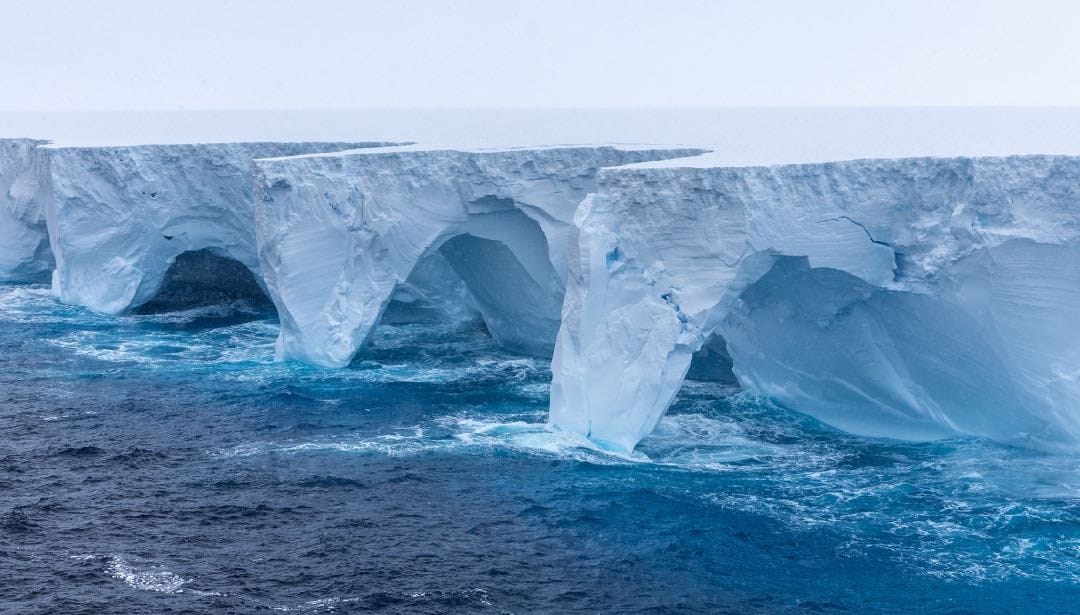Giant Icebergs used to be the nightmare of each cruise ship captain during the time of the Titanic. While most modern ships have better technology and will be able to tell how big an underwater Iceberg is before spotting it with the human eye, there are still some examples that they’d want to stay away from. One of these is A23a, a giant iceberg from 1986, which is currently moving towards South Georgia! Keep on reading and discover everything you need to know about A23a!
A23a Is the World’s Largest Iceberg, and it is Drifting Away from Arctic Waters!
In 1986, the A23a calved itself from the Flichner Ice Shelf. However, it stayed grounded for over 30 years. Last year, it finally started the long-awaited drift from the point where it had detached. The Iceberg is the biggest and oldest in the world, weighs nearly a trillion tonnes, and is about double the size of Greater London!

Scientists believe that the iceberg would have moved sooner if it wasn’t for the Taylor Column, a unique oceanographic phenomenon. This phenomenon trapped it in place for months! Now, the Iceberg is expected to follow the Antarctic Circumpolar Current and will go towards South Georgia. Here, there are warmer waters will probably break the iceberg apart and melt it. This is something researchers are closely monitoring!
Researchers want to know the impact of A23a on the Ocean!
Drifting Icebergs is not a completely new phenomenon, and researchers have already seen the effect smaller icebergs have on oceans. However, with its size, A23a will introduce a lot of new mineral dust and other resources for Oceanic wildlife.
Scientists are anticipating that there will be unexpected bursts of life along the path of the iceberg. Last year, researchers on the RRS Sir David Attenborough captured rare data from the colossal icy mountain. They were studying its effects on ocean nutrients and carbon cycles. Now, scientists aim to uncover how A23a’s massive scale and unique journey will influence the ocean and atmosphere.
